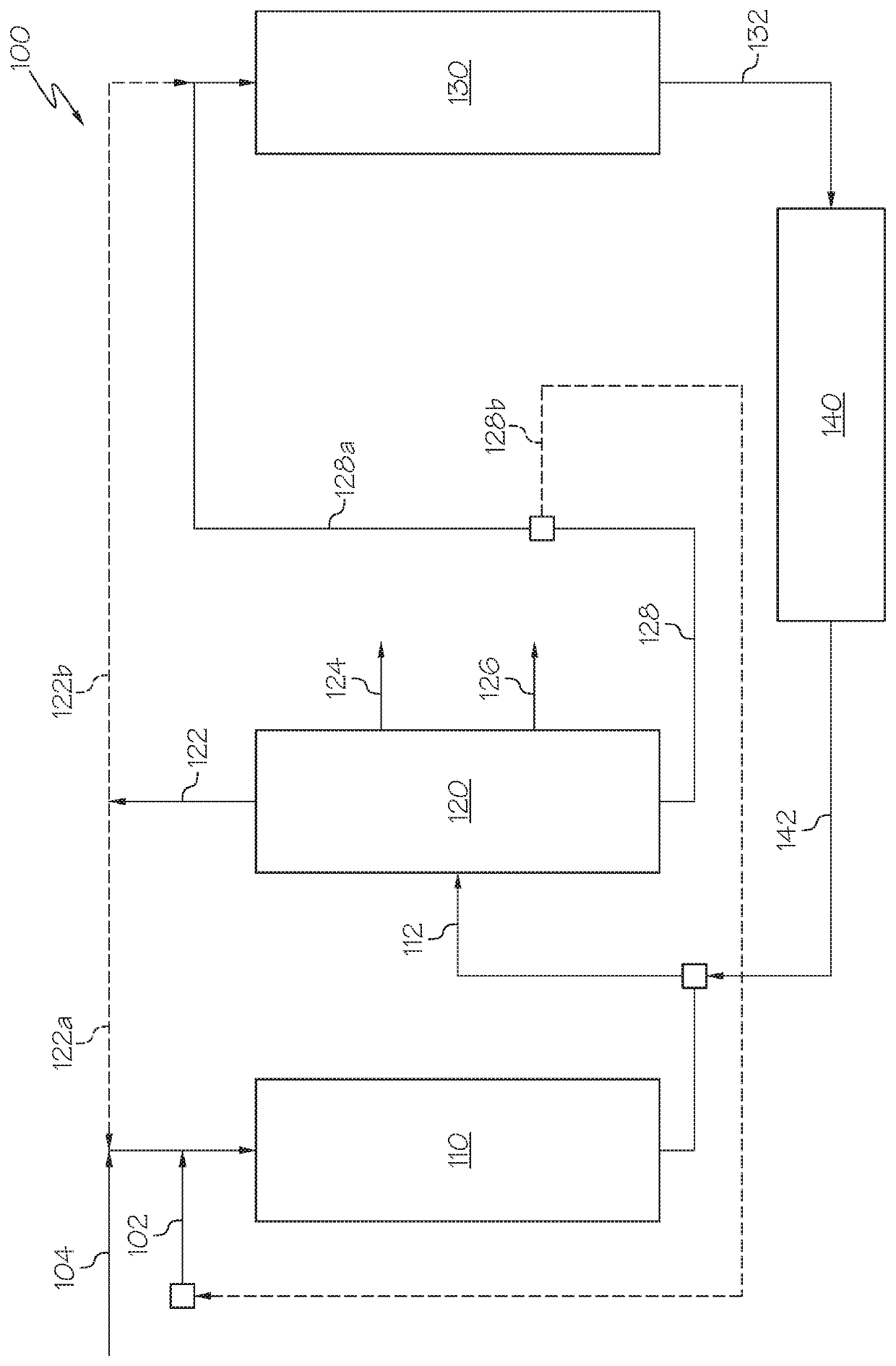Two-stage recycle hydrocracking processes
a hydrocracking and two-stage technology, applied in the field of petroleum-based material systems and processes, can solve the problems of hydrocracking system and downstream process equipment fouling, cost-intensive modifications, and high cost, and achieve the effects of reducing or preventing the precipitation and buildup and increasing the solubility of heavy polynuclear aromatics
- Summary
- Abstract
- Description
- Claims
- Application Information
AI Technical Summary
Benefits of technology
Problems solved by technology
Method used
Image
Examples
example 2
[0061]In Example 2, the hydrocracking process of Comparative Example 1 was repeated with operating conditions of a lesser severity. In particular, the temperature of the first-stage was reduced to 395° C., the temperature of the second stage was reduced to 357° C., and the overall pressure of both stages was reduced to 11000 kPa. The effluent was collected from the hydrocracking unit and the properties and composition of the effluent were analyzed according to the methods shown in Table 2. The composition of the effluent is reported in Table 4.
[0062]
TABLE 4Composition (wt. %)Hydrogen Sulfide (H2S)2.36Ammonia (NH3)0.10Methane0.13Ethane0.19Propane0.78Butane2.46Naphtha24.22Kerosene11.38Diesel27.98Unconverted Hydrocarbon Feed32.65
[0063]The diesel fraction of the resulting effluent, which corresponds to the third separated effluent of the present disclosure, was determined to have a slightly reduced cetane index of 60 and to comprise a greater concentration of aromatic compounds of 16.2 ...
example 3
[0064]In Example 3, 7.2 grams of a sample comprising a concentration of heavy polynuclear aromatics of 3000 ppmw, which effectively simulates an effluent from the second hydrocracking unit described previously, was prepared. At room temperature, the heavy polynuclear aromatics were observed to be precipitating from solution and accumulating on the sample container. The sample was then mixed with 12.7 grams of an aromatic solvent having properties of which are provided in Table 5. After mixing, the heavy polynuclear aromatics were no longer visible as precipitates and any deposits that had accumulated on the surface of the container also returned to solution.
[0065]
TABLE 5Composition (wt. %)Paraffins1Mono-Naphthenes0Di-Naphthenese0Mono-Aromatics74.6Naphtheno Mono-Aromatics3.1Di-Aromatics15.4Naptheno Di-Aromatics5.2Tri-Aromatics5.2
[0066]A first aspect of the present disclosure may comprise a two-stage recycle hydrocracking process comprising hydrocracking at least a portion of a hydroc...
PUM
 Login to View More
Login to View More Abstract
Description
Claims
Application Information
 Login to View More
Login to View More - R&D
- Intellectual Property
- Life Sciences
- Materials
- Tech Scout
- Unparalleled Data Quality
- Higher Quality Content
- 60% Fewer Hallucinations
Browse by: Latest US Patents, China's latest patents, Technical Efficacy Thesaurus, Application Domain, Technology Topic, Popular Technical Reports.
© 2025 PatSnap. All rights reserved.Legal|Privacy policy|Modern Slavery Act Transparency Statement|Sitemap|About US| Contact US: help@patsnap.com

